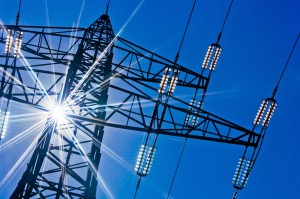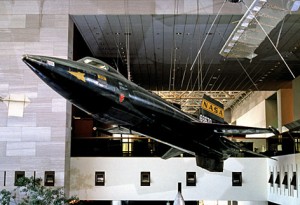By Malcolm Lowe
Courtesy of the Gatestone Institute
Who needs the WCC any more? Would the world, let alone Middle East Christians, be better off without it?The World Council of Churches (WCC) in Geneva claims to represent and serve 345 churches worldwide. What has it done to help the persecuted churches in Iraq, Syria and Egypt? Or the flood of Syrian refugees into Jordan and Lebanon? Answer: it has devoted the whole of 2013 to promoting a World Week for Peace in Palestine Israel(September 22-28). That is, it has poured its Swiss francs into stirring up the one corner of the area that is currently almost calm.
It is not as if it is a secret that Muslim violence in Iraq drove out half the Christian population within a decade. Or that affiliates of Al-Qaeda have emptied whole Syrian villages and towns of their Christian populations. Or that almost a hundred Coptic churches in Egypt were assailed by supporters of the Muslim Brotherhood shortly after President Morsi was deposed. And that was merely one chapter in the ongoing martyrdom of the Copts, which has seen 100,000 of them fleeing Egypt since the downfall of President Mubarak.
All such facts are documented on many websites, above all that of Raymond Ibrahim, which also records the endless attacks on Christians in Pakistan and Nigeria, indeed worldwide, by Muslim groups. Since August 2011, the Gatestone Institute has published his monthly roundup of such reports. Look at the website of the WCC, however, and you will hardly notice any awareness of all that. Instead, the WCC’s website is loaded with schemes and resources relating to the Palestinians. The “resources” offer compilations of Palestinian propaganda, including calls for the so-called Palestinian “right of return” (that is, the transformation of Israel into an Arab-majority state).
The excuse for this absurd imbalance is that the WCC has maintained for decades, and insists on maintaining against all evidence, that the churches of the Middle East have no other real problem than the Palestinian issue. Earlier this year (May 21-25), the WCC held a conference on “Christian Presence and Witness in the Middle East” near Beirut, Lebanon. Its closing statement proclaimed: “Palestine continues to be the central issue in the region. Resolving the conflict between Israel and Palestine in accordance with the UN resolutions and international law, will greatly help resolving the other conflicts in the region.”
 Rifat Odeh Kassis, co-author and general coordinator of the WCC’s Kairos Palestine initiative, former head of the WCC’s Ecumenical Accompaniment Programme in Palestine and Israel, and Special Adviser to the WCC’s General Secretary, is pictured above giving an interview to Hezbollah’s Al-Manar TV. (Photo source: Kairos Palestine) Rifat Odeh Kassis, co-author and general coordinator of the WCC’s Kairos Palestine initiative, former head of the WCC’s Ecumenical Accompaniment Programme in Palestine and Israel, and Special Adviser to the WCC’s General Secretary, is pictured above giving an interview to Hezbollah’s Al-Manar TV. (Photo source: Kairos Palestine) |
Given the misery that has overwhelmed Christians in the wake of the so-called “Arab Spring,” who in the world still believes such nonsense except inveterate Jew haters? For sure, the WCC could round up a few of the latter among bishops in the Middle East, but is that its excuse? How can any sane well-educated church bureaucrat, of the sort from which the WCC is recruited, make such a statement only a two-hour ride away from the turmoil in Syria, which has sent hundreds of thousands of refugees into the same Lebanon where they were conferring?
Such is the current level of persecution of Christians in Egypt that even the WCC cannot wholly overlook it. OnAugust 15 last, Rev. Dr. Olav Fykse Tveit, the WCC General Secretary, sent a brief letter of solidarity to WCC member churches in Egypt. In the letter, he expressed regret for “attacks against several churches and properties of the Christian community.” The word “several” shows unawareness that already fifty churches and a thousand Christian businesses had been set on fire on the day that President Mursi was dismissed, according to Egyptian attorney Ehab Ramsy. That is, if Tveit did not deliberately understate the severity of Coptic suffering.
The WCC’s website informs us that “in addition to his letter” Tveit remarked that “I hope that this will not be interpreted as a conflict between Christians and Muslims.” Who did he think was organizing the systematic assault on Egyptian Christians? Balinese Hindus? Papuan animists? Martians? Even Amnesty International, which is itself otherwise over-busy with the Palestinians, dared to mention – in a detailed report (sixteen pages with ample illustrations) on “Egypt’s Christians Caught between Sectarian Attacks and State Inaction” – that Muslims were responsible for the attacks.
The 234 words of Tveit’s letter constitute the WCC’s contribution to alleviating the suffering of ten million or more Egyptian Christians (it is part of their misery that Egypt provides no reliable statistics). Syrian Christians number some two and a half million; the WCC’s help for them consisted of holding a one-day conference in Geneva onSeptember 18 and issuing a call for peace the next day. By contrast, for the last decade the WCC has been investing real money into promoting the Palestinian cause, although a mere 50,000 Christians dwell in the West Bank and barely a thousand in the Gaza Strip. As an article titled “The Myth of Palestinian Christianity” pointed out, there are far more Arabic-speaking Christians in Israel itself, where they enjoy higher social status (education, income) than even the Jewish population.
For the Palestinians, the WCC has created a special branch of its bureaucracy: its Palestine Israel Ecumenical Forum (PIEF). On the WCC’s What We Do page, the item “Churches in the Middle East” is defined as follows: “This project aims to build a Palestine/Israel Ecumenical Forum as a space where the entire ecumenical movement can put its collective energies and resources together for lasting peace.” In the Middle East, that is, the WCC cares only about Palestine and it wants all the churches in the world to share this exclusive focus.
The PIEF, created in 2007, is the body that organizes the mentioned “World Week for Peace in Palestine Israel.” It has also set up an office in Jerusalem, the Jerusalem Interchurch Center, which seeks to recruit local Christians for activities that promote the Palestinian cause. An example is the notorious Kairos Palestine Document, an initiative created by WCC employees in conjunction with an unrepresentative handful of local Christians, and which the WCC has bombarded upon its member churches.
The WCC’s most lavishly funded Palestinian project, however, is its Ecumenical Accompaniment Program in Palestine and Israel (EAPPI), now in its twelfth year. The dedicated website of this WCC offshoot defines its purpose as follows: EAPPI “brings internationals to the West Bank to experience life under occupation. Ecumenical Accompaniers (EAs) provide protective presence to vulnerable communities, monitor and report human rights abuses and support Palestinians and Israelis working together for peace. When they return home, EAs campaign for a just and peaceful resolution to the Israeli/Palestinian conflict through an end to the occupation, respect for international law and implementation of UN resolutions.”
The “internationals” are recruited mainly from Western Protestant churches and they spend just three months gaining their “experience” (read: intensive indoctrination in Palestinian “narratives” the veracity of which they have no chance to check). Why only three months? Because this is the length of a standard Israeli tourist visa, so they can come and go as tourists without being noticed. On their return, they are required to spend as much time touring their churches to promote the message that they have learned.
Here we see the real evil that results from this scheme. Through EAPPI, the bureaucracies of the rich Protestant churches have been convinced that the only thing that they need to worry about in the Middle East is the Palestinian situation. All the mission resources of Western Protestants are focused on Palestine and their relevant bureaucrats are just as totally obsessed with the issue as is the WCC itself. The persecuted Christians of Iraq, Syria and Egypt may as well go hang.
Why, one might ask, has the WCC not even thought of setting up “accompaniment” programs for countries where Christians are dying and their churches are withering away? One answer is the preposterous lie propagated by the WCC, as quoted above: that Palestine is the “central issue” and that solving this issue will rescue the Christians perishing elsewhere in the Middle East.
Another answer is sheer cowardice. The main task of EAPPI internationals, apart from listening to unverifiable Palestinian tales, is to watch Palestinians go through Israeli checkpoints. The number of checkpoints has been drastically reduced in recent years and the Israeli authorities are introducing quicker and surer means of identification, so not much risk there. If the EAPPI internationals want a little whiff of danger, they can go on a Friday to watch – from a safe distance of course – a ritual battle between Palestinian youths throwing stones and Israeli soldiers responding with tear gas. In Egypt or Syria, on the other hand, they would have faced a real danger from machine guns, arson or bombardment with conventional and chemical weapons.
Fortunately for the Christians of the Middle East, the Vatican never joined the WCC and merely sends observers on the rare occasions when the WCC remembers its original purpose: to encourage theological discussions about divided Christianity. In Syria and Egypt, Catholics of the Franciscan Order, among others, are courageously facing serious danger in providing aid to persecuted Christians of all denominations.
Unlike the WCC and the Western Protestant churches influenced by its obsession with Palestine, the Russian Orthodox Church has assumed a real financial burden on behalf of Syrian Christians. In August this year, the Moscow Patriarchate transferred over a million dollars to the Greek Orthodox Patriarchate of Antioch to aid them. “Donations were coming from dioceses, parishes, monasteries, and individuals from various cities, including Kaliningrad, Vladivostok, Yekaterinburg, Syktyvkar, Saransk, Murmansk, Pskov, Orenburg, Volgograd, Tula, and even Krymsk which underwent devastating floods last year,” the Moscow Patriarchate noted. “Money was also transferred to the account of the Department for Church Charity and Social Service from Israel, Armenia, Italy, Germany, and other countries.”
Yes, even Russian Orthodox in Israel made a contribution. Likewise, the Greek Orthodox Patriarchate of Jerusalem is working among Syrian refugees in Jordan. There are also Jewish groups in Israel that have taken upon themselves the dangerous task of supplying food and medical supplies to victims of Syria’s civil war. At the same time, hundreds of wounded Syrians have been smuggled into Israel to receive medical care in hospitals, provided free, while the Israeli army has set up a field hospital near the border for less urgent cases. In Israeli medical institutions, of course, Muslims and Christians work alongside Jews to provide treatment for everyone, enabling easy communication with Syrian Arabs. So here is the paradox: the WCC relentlessly spreads discredit of Israelis in churches worldwide, while Israelis are doing vastly more than the WCC to help victims of the violence in Syria.
Let us note what the WCC is, and what it is not. It describes itself as an organization of “345 member churches representing over 500 million Christians in more than 110 countries and territories.” This aspect of its existence, however, is in evidence only once every few years when it organizes an assembly or a conference. For the rest of the time, the WCC is no more than a bunch of bureaucrats at its Geneva office. Its activities and declarations are determined by them and them alone. When one of them retires, the others choose a successor. Preponderantly, they come from a small number of Protestant churches in North America and northern Europe. Exceptionally, during 2004-2009 the General Secretary was a Kenyan, but he suddenly resigned after questions were raised about his doctorate. The current incumbent, Tveit, is a Norwegian Lutheran.
Those Protestant churches are the ones most in thrall to the WCC’s Palestinian agenda. Consider, for example,Robert O. Smith, who is a co-moderator of the WCC’s PIEF, as well as covering Europe and the Middle East on behalf of a major US Lutheran church (the ELCA). Smith is constant critic, or rather denigrator, of Christian Zionism, whether in his doctorate, his articles or a recent book.
Another example is the US Presbyterians (PCUSA). Their Middle East bureaucrats have for years tried to drag the church into a pro-Palestinian stance. Many of the laity, however, are opposed, whether because of sympathy for Israel or resentment at being dictated to by those bureaucrats. So every two years a battle is fought out at the PCUSA’s General Assembly. Both sides invest large amounts of money to muster support, money that desperately poor Egyptian Coptic families could have used much better. To date, the bureaucrats have mostly lost, but only until the next General Assembly.
In the PCUSA, at least, Presbyterian democratic principles still function. Not so in various European Protestant churches, where the laity is less able to exert itself. Elsewhere, I have documented how deeply flawed pro-Palestinian reports were officially accepted by the British Methodists and the Church of Scotland. The first major church to go in this direction, however, was the Church of Sweden. In such instances, what has arrived is a new kind of replacement theology: the Palestinians have become the Chosen People and the Kairos Palestine Document takes precedence over the Bible. Indeed, while these churches encourage severe criticism of the Bible, Kairos Palestine is treated as infallible Holy Writ.
It is not surprising that churches that have discarded the fundamentals of Protestant theology have also suffered a massive drop in membership, financial crises and a general loss of direction in recent decades. That connection was pointed out in a masterly analysis by Dexter Van Zile three years ago; the intervening time has merely confirmed it. He wrote when PCUSA membership was dropping at around 3% annually; in 2012 it was 5.26%.ELCA membership has dropped 5.95%, 4.98% and 2.68% during 2010-2012.
The agenda of the WCC’s conferences and assemblies, along with any statements issued, are also determined in Geneva. A Franciscan friend was once invited to such a show. When he arrived, he was told that his task was to read out a greeting from the Christians of the Holy Land. Looking at the text that was thrust into his hand, he protested that he had never seen it before, that he had certainly not brought it from the Holy Land, and that there were things obviously wrong in it. No, he was told, he must read it out exactly as it was.
Similarly, the upcoming Tenth Assembly of the WCC (October 30-November 8 in Busan, Korea) is already fully predetermined. The theme dictated from Geneva, “God of life, lead us to justice and peace,” is a giveaway: “peace and justice” is a familiar slogan of pro-Palestinian propaganda. The Handbook of the Tenth Assembly indeed shows that EAPPI and Kairos Palestine will be strongly featured, along with the “Eco-Justice of Palestine.”
What is Eco-Justice, one might wonder? Answer: “The speakers will address the daily injustices of the occupation and the critical condition of the environment in the Holy Land. Water shortage, issues of solid-waste management and food sovereignty, are all pressing concerns for Palestinians. Addressing how these concerns affect the human population economically, culturally, and psychologically, the workshop will inform participants about eco-justice and foster a discussion on the necessity for international solidarity on this issue.”
Just don’t expect them to mention such issues as the Palestinian Authority’s refusal to engage in joint sewage treatment projects with Israel, the immense wastage in the leaky water mains of Palestinian cities, or the illegally dug wells that have caused the water table of Gaza to become polluted with seawater. No, the Palestinians will make Israel the scapegoat, as usual, for all their own sins against the environment.
At the beginning of last year, Prof. Haim Gwirzman of Bar-Ilan University’s BESA Center published a total refutation of all the often-repeated Palestinian lies about their water situation. A summary of his findings can also be found here. It is typical of Palestinian propaganda, however, that the same old lies are constantly repeated, never mind how often or how thoroughly they have been refuted. And never mind when Christians do the same. When Israel is to be besmirched, truth is immaterial – just one of the links between anti-Israelism and antisemitism.
On the other hand, the words “Syria,” “Egypt,” “Iraq” and “Lebanon” occur nowhere in the Handbook for the WCC’s upcoming assembly. The word “Jordan” features only in the name of the “Environmental Education Center of the Evangelical Lutheran Church in Jordan and the Holy Land,” the presenter of the nonsense workshop on “Eco-Justice.” Once again, the WCC will totally ignore the truly pressing miseries of Middle East Christians in favor of pro-Palestinian agitation.
Yes, you may object, but surely there is much more on the agenda of the Tenth Assembly? Put it the other way round: if the other sessions are on a similarly low level, why go half way round the world to get there? Let whoever can spare the time look throughout the Handbook and draw their conclusions. They may find that the WCC is unconcerned about what is on offer, provided that all participants go home with a fixation on Palestine.
This leads to a broader question: Who needs the WCC any more? Would the world, let alone Middle East Christians, be better off without it? When the WCC was founded in 1948, it was highly unusual that leaders of diverse churches conferred together. Today it is commonplace and facilitated by quick and cheap air transport. Popes and prelates whizz around everywhere. If the WCC simply disappeared, it would end a convenient parking place for Protestant bureaucrats who feel bored or out of place in their particular churches. But who else would miss it?
As for this year’s “World Week for Peace in Palestine Israel,” its impact seems to have been rather small. PIEF published a brief note about participation “in at least 22 countries worldwide” together with a more detailed list. It amounts to saying that in just 20% of the WCC’s “more than 110 countries and territories” at least one church responded. In Germany, for instance, only an event in the city of Essen is mentioned. Under “USA” no events are listed, just prayers issued by a board of the United Methodist Church and by the Presbytery of Atlanta. In “Russia and Ukraine” only a Methodist church participated. It can hardly be described as a mass movement. Rather, it is a sectarian cult with its own comic rituals.
One of those rituals is a “game of chance” called “Occupation: a game of life.” It is modeled upon “snakes and ladders” and is supposed to depict Palestinian misery. You can see here Bishop William Kenny and Rev. Paul Dean hopping around in this fashion under the gaze of Palestinian Lutheran Bishop Younan in London. The inventors of this game call themselves “Embrace the Middle East,” so they ought to invent versions for Syrian and Egyptian Christians under the rubric of “a game of death.” (“Monopoly,” after all, is available in all sorts of national versions.) Only then the hopping clerics would have to simulate horrible deaths on certain squares. On others, they would have to empty their pockets to pay the jizya tax extorted from Copts by Muslim gangsters.
The WCC’s own contribution was to be a mass pilgrimage to Jerusalem, but it seems not to have materialized. PIEF’s list does not mention it. There were rumors about a couple of dozen such “pilgrims” receiving intensive instruction in a Bethlehem convent, a kind of EAPPI crash course. If it happened, it was minimal in comparison with the thousands of Christian Zionists who, that same week, were at the Feast of Tabernacles Conference organized by the International Christian Embassy in Jerusalem. The Israeli press noticed only the latter, marching through the streets and waving their national flags amid a traditional parade of Israeli organizations.
During those very days, September 22-28, the world media had no time for the WCC; all eyes were fixed on the attack upon a shopping mall in Kenya by Somali Muslim terrorists. Everyone heard and read the horrifying reports of how the terrorists first dismissed any who could prove themselves to be Muslims, then inflicted grotesque tortures on others before murdering them. Fear of Islamic extremism, not worrying about Palestine, has the stronger grip on most in the West.
Even the Palestinian press seems to have ignored the WCC’s scheme. Inspection of the pages of Al-Quds for that week did not turn up any reference, though various other delegations were duly recorded. Maybe some event among those listed by PIEF under “Palestine” was mentioned somewhere, but the reference must have been very brief.
Finally, let us look at PIEF’s recommendation for church services on Sunday, September 22. It was entitled “To pray you need a military permit” and consisted of a twofold ritual. First of all: “Block your own church entrance with barbed wire or a barrier, explaining that members of the congregation do not have the proper permit to enter church.” This is certainly more convenient than sending in gunmen to shoot indiscriminately, throw bombs, tear down and destroy pictures, smash crosses, and set the place on fire. That is, if they wanted to simulate the experience of Christians in Egypt, Syria, Iraq, Pakistan or Nigeria.
The second part of the ritual was to read aloud a statement issued by the Heads of Churches in Jerusalem last Easter, after a fracas at a police barrier in the Old City of Jerusalem. The statement complained about “great sorrow and pain for some of our faithful because they were ill-treated by some Israeli policemen.”
Well, you can see for yourselves a video of the incident. Although the Jerusalem Post obligingly entitled the story “Video shows Jerusalem Police assault elderly priest,” the video tells a different story. The priest concerned obviously tried to force his way through a police barrier and had to be restrained. Anyone less august might have been arrested for defying police instructions and using force against police officers.
One who has observed many Easters in Jerusalem can easily explain what the police procedure is. The problem is that streets around the Holy Sepulchre are very narrow, making it almost impossible for large numbers of people to move simultaneously in both directions. So the police cordon off the whole area with barriers and establish distinct entry points and exit points, such that the flow of the faithful is always in one direction.
The priest concerned, identified as the head of the Coptic Church in Ramallah, only needed to go to one of the designated entry points. But he thought that he and his friends should be an exception; when he tried to force his way through somewhere else, the police stopped him. The Copts were furious and the Heads of Churches, irrespective of the rights of the matter, issued a statement of solidarity in order to save the face of the Coptic Church.
So we see that it is a plain lie to present such a ritual under the title “To pray you need a military permit.” An appropriate title would be “To enter the church, please use the north door.” At the other doors of the church, instead of barbed wire, one should hang up such a notice. But who could get excited about that?
###
Malcolm F. Lowe is a Welsh academic in the fields of Greek philosophy, the New Testament, and Christian-Jewish dialogue.
This article was originally published by the Gatestone Institute.









